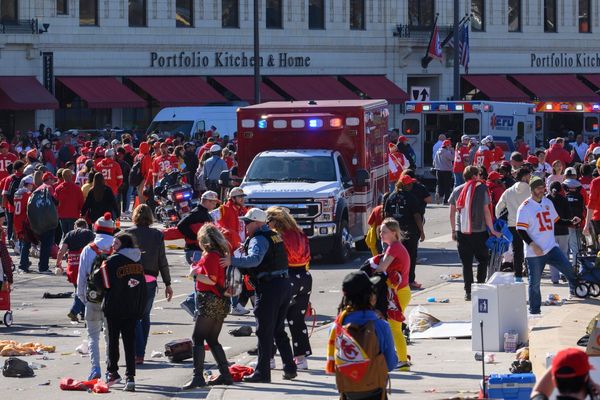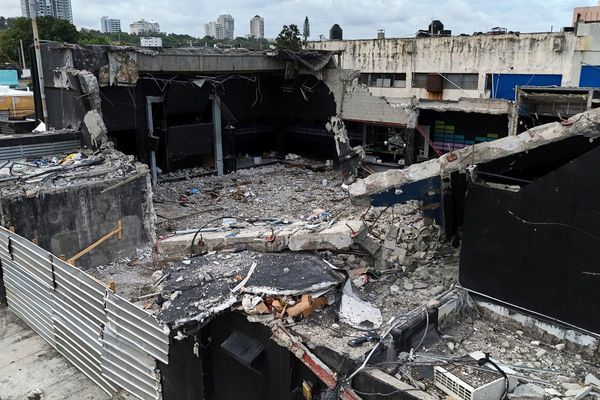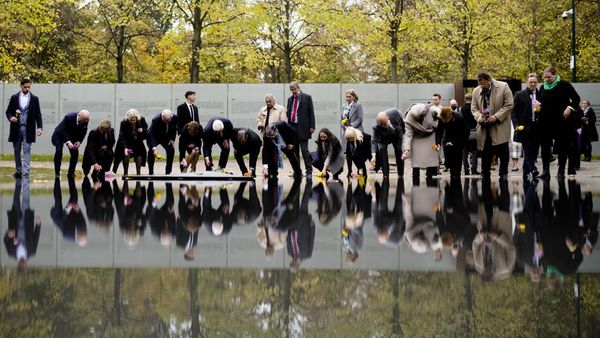
As NFL offenses change, so do the defenses that stop them.
It’s pretty simple, really. When NFL offenses go through their significant facelifts, defenses must find modern solutions to stop them.
The current trend has been the evolution and reliance on the passing game. Ten years ago, only three teams attempted over 650 passes, and only one threw over 700 (the Detroit Lions attempted 740). Last season, five teams eclipsed the 650 mark, and three reached 700.
As I explained in the power slot article, defenses are beginning to face unique challenges and must find modernized solutions. In the secondary, teams have used bigger defensive backs who can solve the issue of bigger receivers, but there haven’t been many solutions in the front seven.
Look, aerial offenses have led to a different kind of tight end. Teams no longer want the in-line tight ends who are extra blockers. Instead, they want tight ends that can run diverse route trees and impact the receiving game. As a result, we’ve seen tight ends like Kyle Pitts go in the top 10 of the NFL Draft.
Defenses are attempting to mitigate this problem by changing how they build linebacker rooms. Teams aren’t interested in thumpers anymore, and stopping the run has taken a step back to the pressing problem in front of them.
As a result, we’ve seen safeties move down to linebacker to help cover tight ends. We’ve also seen more teams embrace smaller and more athletic linebackers who can cover tight ends. It’s really just the reality of modern-day football; if you don’t adjust, you’ll struggle on defense. If you adjust, you’ll find that playing defense is an easier task than ever before.
Here are some of the “modern-day” linebackers in the 2023 NFL Draft and how they can impact the game.
Modern Day Linebackers in Brian Flores' system

Hybrid linebackers are commonplace in Brian Flores’ defense because he plays so many cover 1 and cover 0 looks. As a result, linebackers are asked to either rush the passer or cover running backs and tight ends.
Andrew Van Ginkel is an example of the former. While at Wisconsin, Van Ginkel was already showing signs of being a hybrid outside linebacker in the Badgers’ 3-4 defense. In the NFL, Flores carried that over with the Dolphins, having Van Ginkel serve as a rotational linebacker in certain situations. Van Ginkel has 11 career sacks in the NFL and has even defended 13 passes.
Andrew Van Ginkel blasts around the corner for the sack on mac jones pic.twitter.com/WTg1W2g3qm
— FinCuts (@FinCuts) January 9, 2022
Safety Brandon Jones was a starting safety for the Dolphins but plays more of a box role within the defense. When Flores calls his signature all-out blitzes, Jones is among the extra pass rushers and has proven to be an impactful blitzer with 8.0 career sacks.
brandon jones sack pic.twitter.com/IwQOAivHIp
— josh houtz (@houtz) October 9, 2022
Otherwise, Jones is an additional box defender that helps cover the ever-evolving tight-end position, allowing Jones to remain on the field for an extended number of snaps.
Hybrid linebackers are also important against the run for Flores. Since Flores is asking his defensive lineman to one-gap against the run, he needs the linebackers to be athletic enough to cover the open gaps. It’s how players like Jerome Baker and Duke Riley have carved out their different roles in side the defense.
Washington State LB Daiyan Henley

Few positions on the football field have seen more of a transformation than the inside linebacker, or MIKE, position.
In 2012, Dont’a Hightower was a first-round selection after measuring 6-foot-2 and 265 pounds. At the NFL Scouting Combine, Hightower ran a 4.68-second 40-yard dash, which was low for an inside linebacker.
Now, let’s compare that to Washington State linebacker Daiyan Henley, who will likely be a day-two selection this year.

Yeah… the inside linebacker position has changed.
While linebackers like Hightower can still carve out roles in the league, teams are looking to get faster at the position. However, faster inside linebackers are often shorter and lighter than older examples.
Henley is a unique example because he’s a versatile linebacker. Finding his best fit has been difficult because he’s not fully refined as a run defender. He gets stuck on blocks at times and struggles to shed them in enough time to play. However, there are enough encouraging signs that he can use his athleticism to avoid getting stuck on blocks.
Like Mapu, Henley can be slow with diagnosing plays, but his athleticism helps him maneuver out of those situations. Henley is a true sideline-to-sideline athlete, and he’ll likely be able to find his fit in the NFL because of it.
Henley’s versatility isn’t like Mapu’s because Henley has shown the ability to be an impactful pass rusher. Last season, Henley had four sacks and 12 tackles for loss and showcased that his athleticism is an asset as a pass rusher.
That also likely limits his fit in the NFL. If a team is looking to utilize his pass-rushing ability, they’ll likely have to play him as a 4-3 outside linebacker or 3-4 inside linebacker. Asking him to be the lone inside linebacker in a 4-3 would put a lot of stress on the middle of your defense, especially if you want him to pass rush.
Think of him more like Kyle Van Noy — who played under Brian Flores in New England and Miami — who has shown that he can rush the passer in the NFL.
Sacramento State LB Marte Mapu

Marte Mapu is an intriguing prospect because his role in the NFL is incredibly undefined.
While at FCS Sacramento State, Mapu wore different hats over the games. Mapu was a typical outside linebacker at times for the Hornets and was asked to provide support in the run game and zone coverage. Other times, he was a third safety who was asked to cover receivers and tight ends.
Mapu is a quintessential modern-day linebacker because most older linebackers weren’t asked to be versatile players. Think of the linebackers coming out of the draft just a decade ago and what they were asked to do. Most of them were tasked with playing one position, and that’s it.
While there are questions if Mapu can play multiple roles in the NFL because his athleticism is a concern, there’s reason to believe he could play as a “big safety.” Big safeties are unique players because they have extra coverage responsibilities but often line up in the box. Think of them as box safeties with a little more size.
Mapu’s NFL value will come from his ability to be a big safety because his processing speeds are a concern. At times, Mapu seems to stop on the field, which could be chalked up to his struggles in seeing plays before they develop. However, he’s shown some clean hips to help cover tight ends.
Texas LB DeMarvion Overshown

Remember in the introduction when we discussed how teams would move safeties to linebacker?
That shift got its start at the college level. When college offenses began to spread out horizontally and vertically, defenses responded by moving safeties to linebacker.
Among those to make the switch is Texas’ DeMarvion Overshown. Overshown was a safety his first two years with the Longhorns but moved down to linebacker to carve out his full-time role. That switch has led to Overshown being considered a day-two selection by most in next week’s NFL Draft.
Overshown is a physical monster. The 6-foot-3 linebacker isn’t afraid to take a soul in the open field and has plenty of big hits to show for it. However, that also leads to missed tackles because some players have shown the ability to break through these attempts at a big hit.
When Overshown enters the NFL, he’ll create an interesting task for whatever defensive coordinator has to find his long-term fit.
Overshown has grown a lot as a linebacker over the last few seasons, and he’s shown the upside that teams would covet; however, there needs to be more consistency before expecting him to be a three-down linebacker. Overshown will likely have to start as a third-down linebacker who covers tight ends and slot receivers in zone coverage. It’s also possible that he plays a similar role to the aforementioned Mapu as a box safety.
Overshown was a mixed bag of results against the run, however. When offensive linemen blocked him, Overshown lacked the play strength to shed them and make a play. When he got a free release, though, his range and motor allowed him to trigger quickly and make impressive plays.
If he can find his footing in the run game, though, the sky is the limit for a player like Overshown. His athleticism and size combination does not come around often, and it’s not hard to envision a situation where he’s an impactful linebacker for a long time. However, Overshown is more like a ball of clay than a finished product, meaning he’ll have to land in the right situation.
In Brian Flores’ defense, Overshown could carve out a role similar to Jerome Baker’s. Baker has been the Dolphins’ starting linebacker since 2018 and crossed paths with Flores during that time. Baker is likely a little better behind the line of scrimmage, but Overshown’s ability in pass coverage exceeds what Baker offers.







